1. General Introduction
Cantonese is the name of a dialect which belongs to the Yue (粵) family spoken in southeast China where it functions as the region’s standard language and lingua franca historically (Ramsey, 1987). The estimated total number of Cantonese native speakers is 59 million in 2007 (Parkvall, 2007). Cantonese is also the first language of over 90% of the Chinese population of Hong Kong, satisfying the social, cultural, and linguistic needs of Hong Kong society (Bauer & Benedict, 1997).
2. Syllable Structure
A Cantonese syllable corresponds to a Cantonese word. It includes four components of initial, nucleus, coda, and tone. Figure 1 developed by Bauer and Benedict (1997) indicates the correspondence between the structural components of the Cantonese syllable and the type of sounds. According to Figure 1, the maximal syllable takes the form of Initial Consonant + Vowel + Final Consonant + Tone (CiVCf/T), and the minimal syllable structure is a Long Vowel + Tone (V:\T) (Bauer & Benedict, 1997).

Figure 1. Structure of the Cantonese syllable (based on Bauer & Benedict, 1997)
3. Consonant
There are 19 phonemes in the inventory of Cantonese consonants that occur as initial consonants of syllables, including 16 oral consonants and 3 nasal consonants. The nasals m, n, ŋ and the stops p, t, k occur as both the initial and final consonants of syllables (Bauer & Benedict, 1997). Table 1 lists the consonants according to their place and manner of articulation.
Table 1. Cantonese consonant phonemes (Zee, 1991)

4. Vowel
There are 11 vowels and 11 diphthongs in Cantonese (Zee, 1999). Seven of them are long vowels /i, y, ɛ, œ, a, ɔ, u/, and four are short vowels /ɐ, ɪ, ɵ, ʊ/, as shown in Figure 2. The short vowels /ɪ, ɵ, ʊ/ are allophones of /i, œ, u/, respectively. The 11 diphthongs are /ai, ei, ɐi, ui, ɔi, au, ɐu, iu, ou, ɵy, ɛu/, as presented in Figure 3 (To, Cheung, & McLeod, 2013).
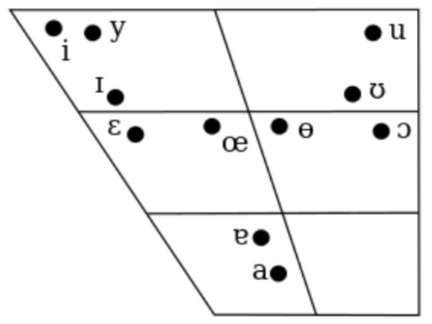
Figure 2. Cantonese vowels
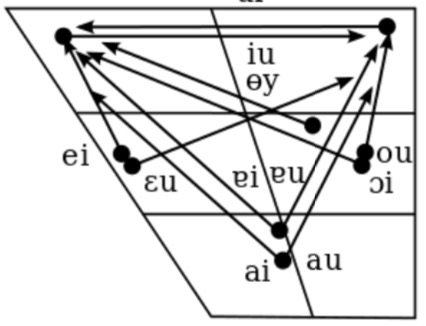
Figure 3. Cantonese diphthongs
5. Tone
The Cantonese tone system comprises a set of nine phonemic tones as shown in Table 2 below. There are six contrastive lexical tones (T1 to T6) and three allotones (T7 to T9) which are shorter versions of T1, T3 and T6 respectively with an unreleased final stop consonant /p, t, k/. There is no neutral tone for unstressed syllables in Cantonese (Bauer & Benedict, 1997).
Table 2. Cantonese Tone system (Adapted from Wikipedia)
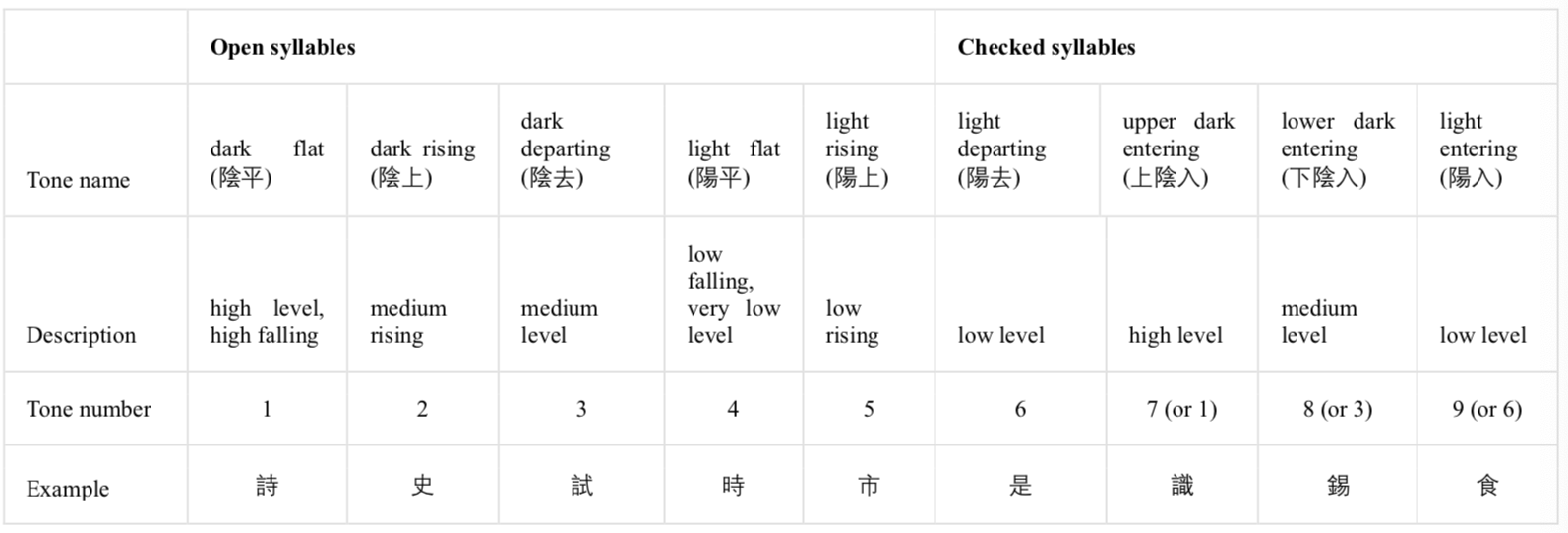
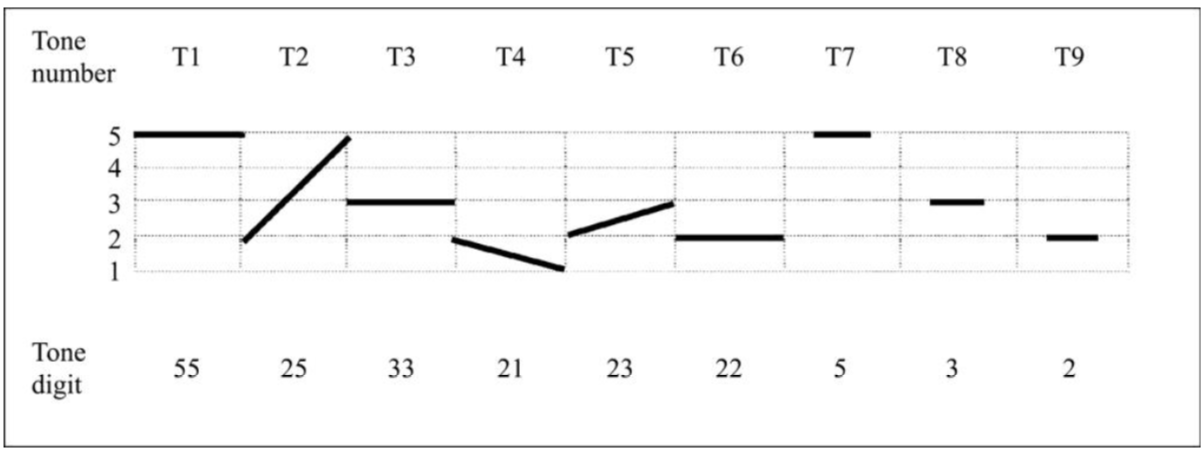
Figure 4. Nine tones in Cantonese
5.1. Tone Sandhi
In spoken Cantonese, tone sandhi occurs in certain tonal environment:
a. in a sequence of two High Falling tones, the first one changes to High Level under the influence of the second High Falling tone, or
b. in a sequence of High Falling and High Level, the first High Falling tone changes to High level under the influence of the High Level tone, or
c. in a sequence of High Falling and High Stopped, the High Falling tone changes to High Level under the influence of the High Stopped tone. (Bauer & Benedict, 1997, p. 163).
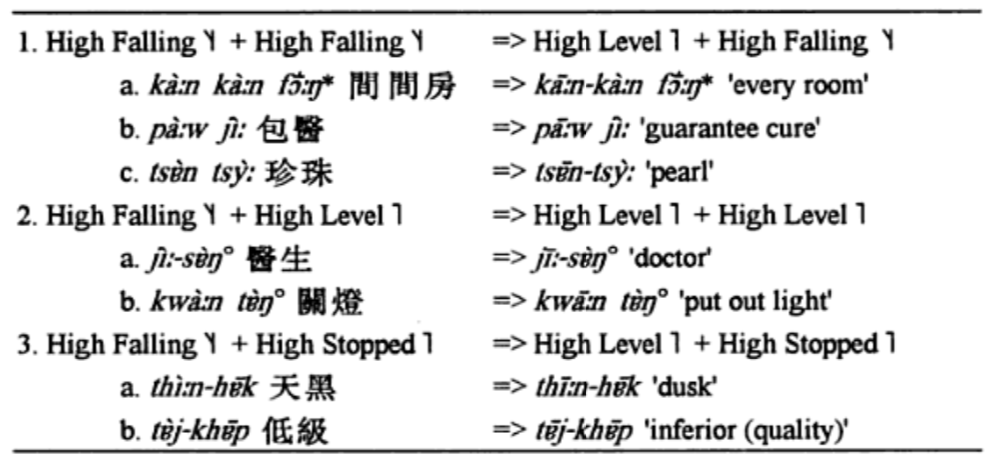
Figure 5. Cantonese tone sandhi (Bauer & Benedict, 1997, p. 163)
References
Bauer, R. S., & Benedict, P. K. (1997). Trends in Linguistics: Modern Cantonese Phonology. Berlin: Walter de Gruyter.
Mikael Parkvall, “Världens 100 största språk 2007” (The World’s 100 Largest Languages in 2007), in Nationalencyklopedin. Asterisks mark the 2010 estimates for the top dozen languages.
Ramsy, S. R. (1987). The Languages of China. Princeton: Princeton University Press.
To, C. K. S., Cheung, P. S. P., and McLeod, S. (2013). A Population Study of Children’s Acquisition of Hong Kong Cantonese Consonants, Vowels, and Tones. Journal of Speech, Language, and Hearing Research, 56, 103-122. doi:10.1044/1092-4388(2012/11-0080)
Zee, E. (1991). Chinese (Hong Kong Cantonese), Journal of International Phonetic Association, 21:1.
Zee, E. (1999). Chinese (Hong Kong Cantonese). In Handbook of the International Phonetic Association (pp. 58–60). Cambridge, England: Cambridge University Press.
Hits: 52116